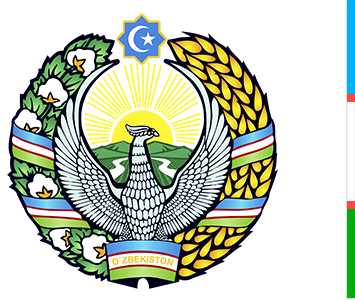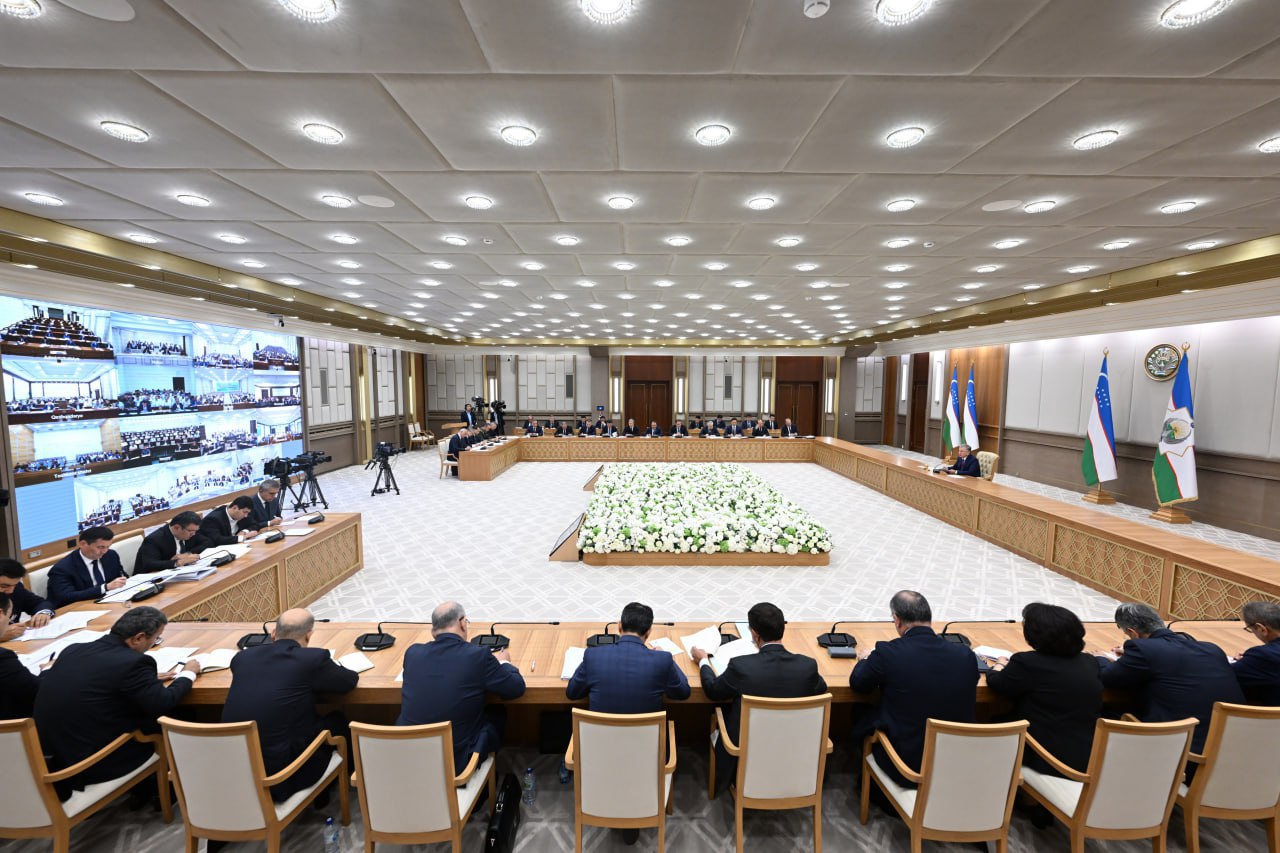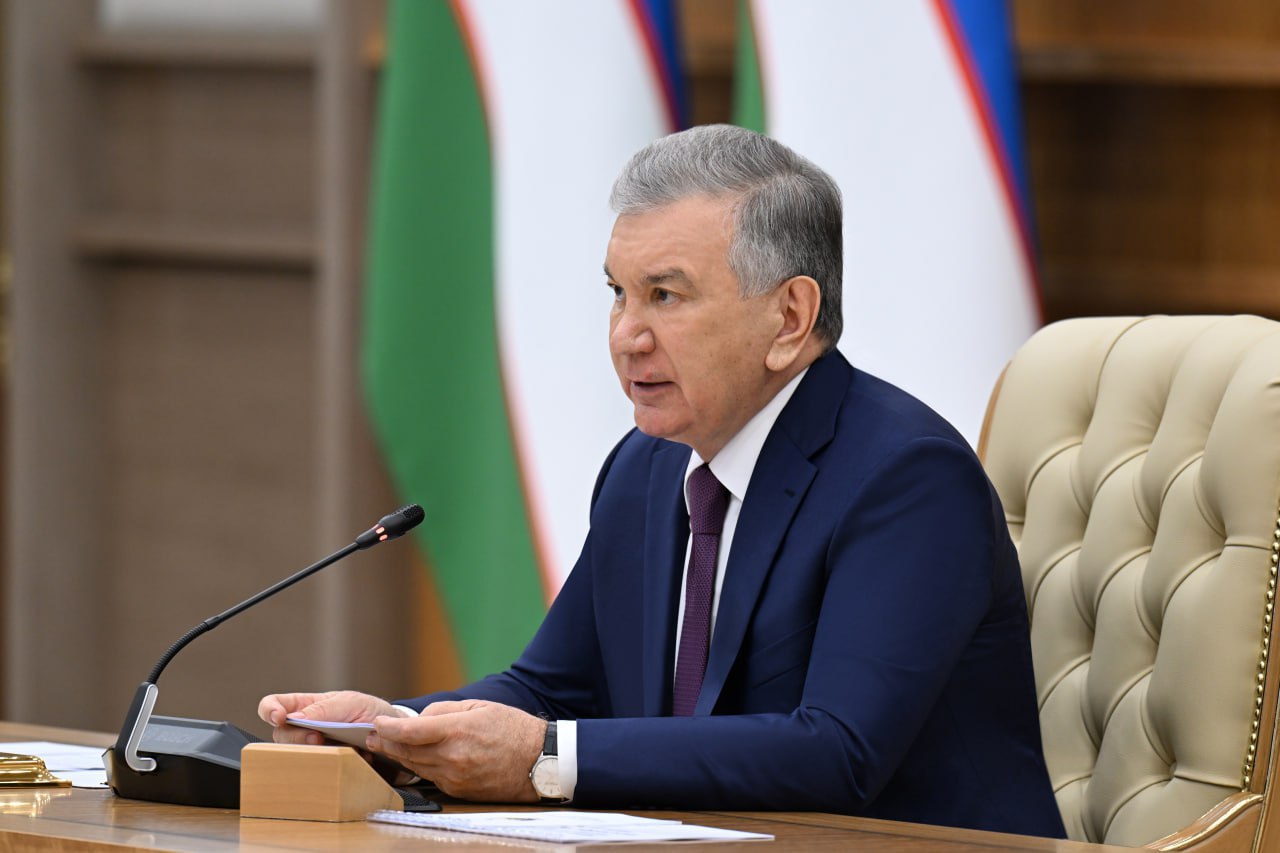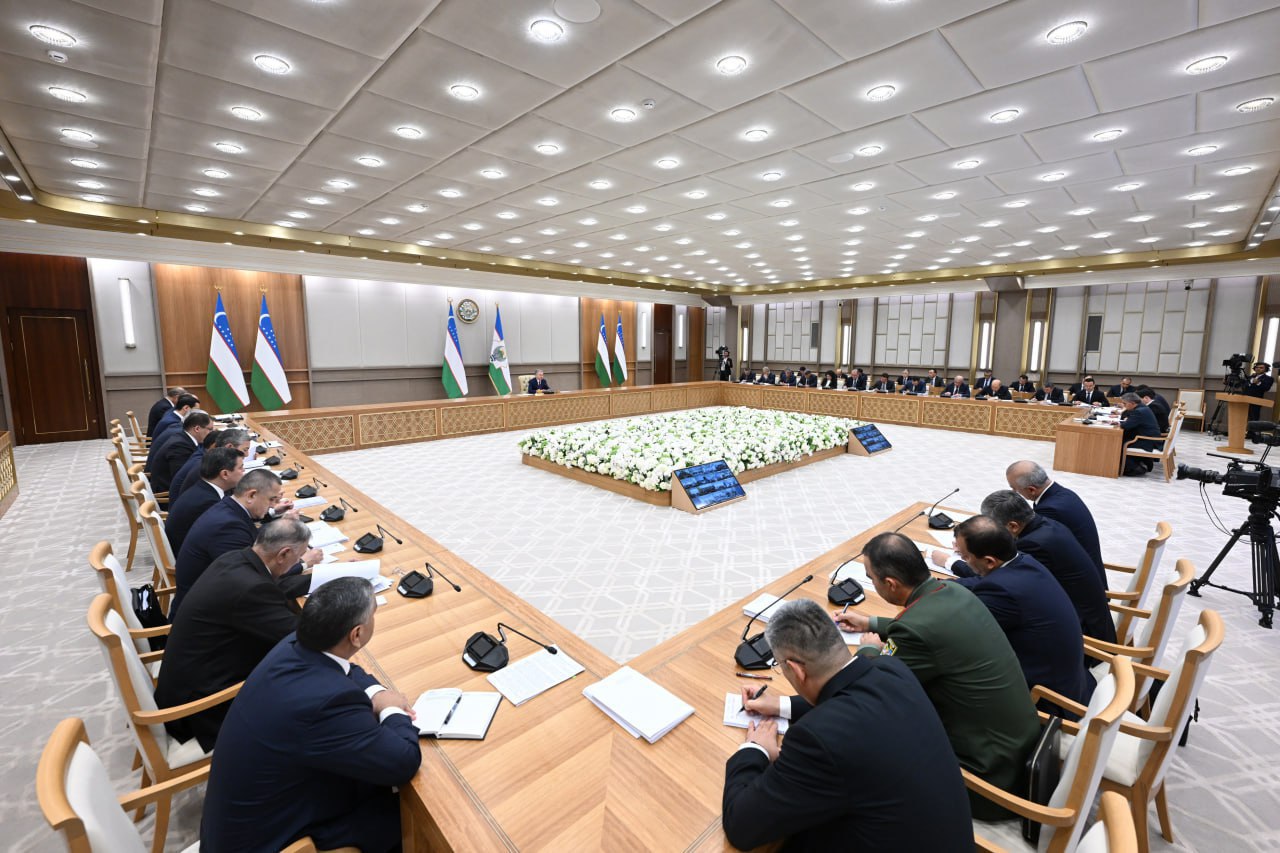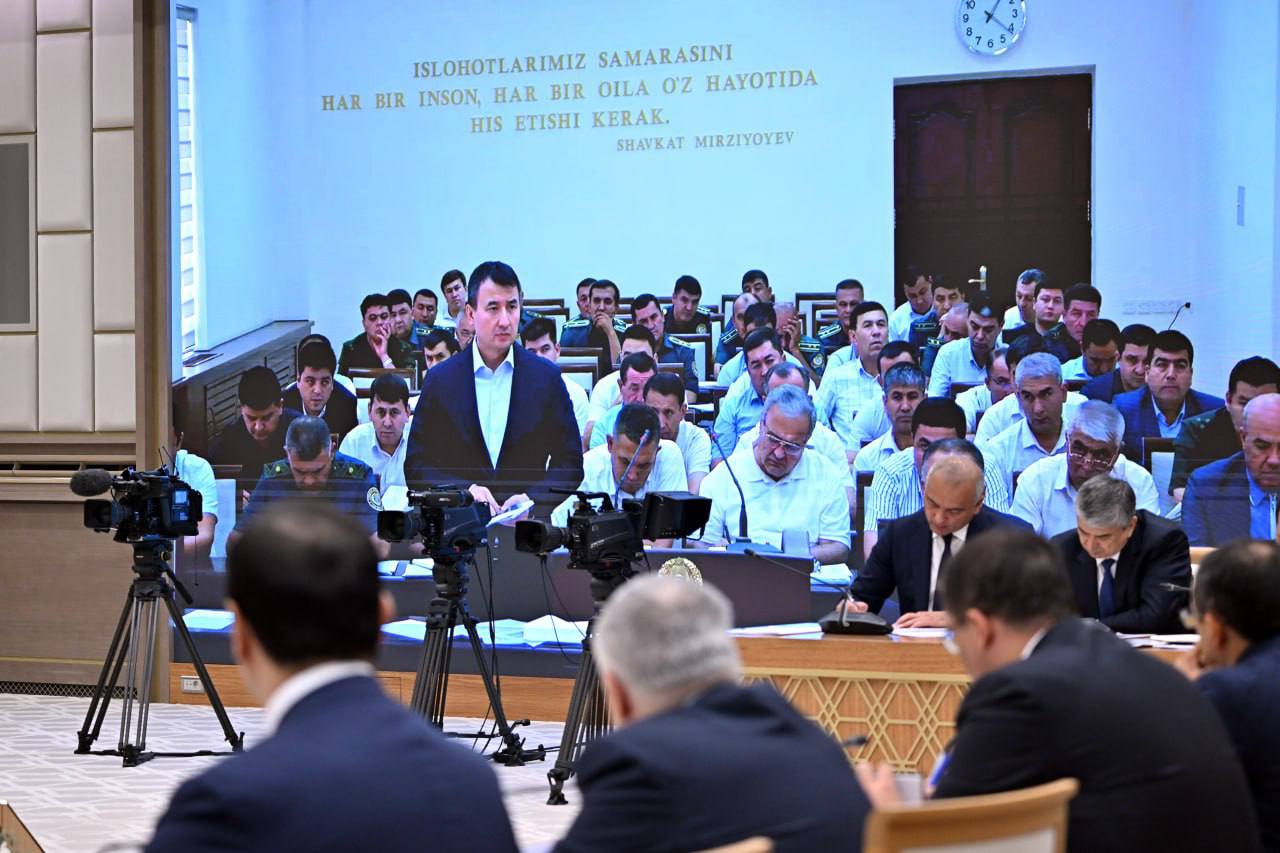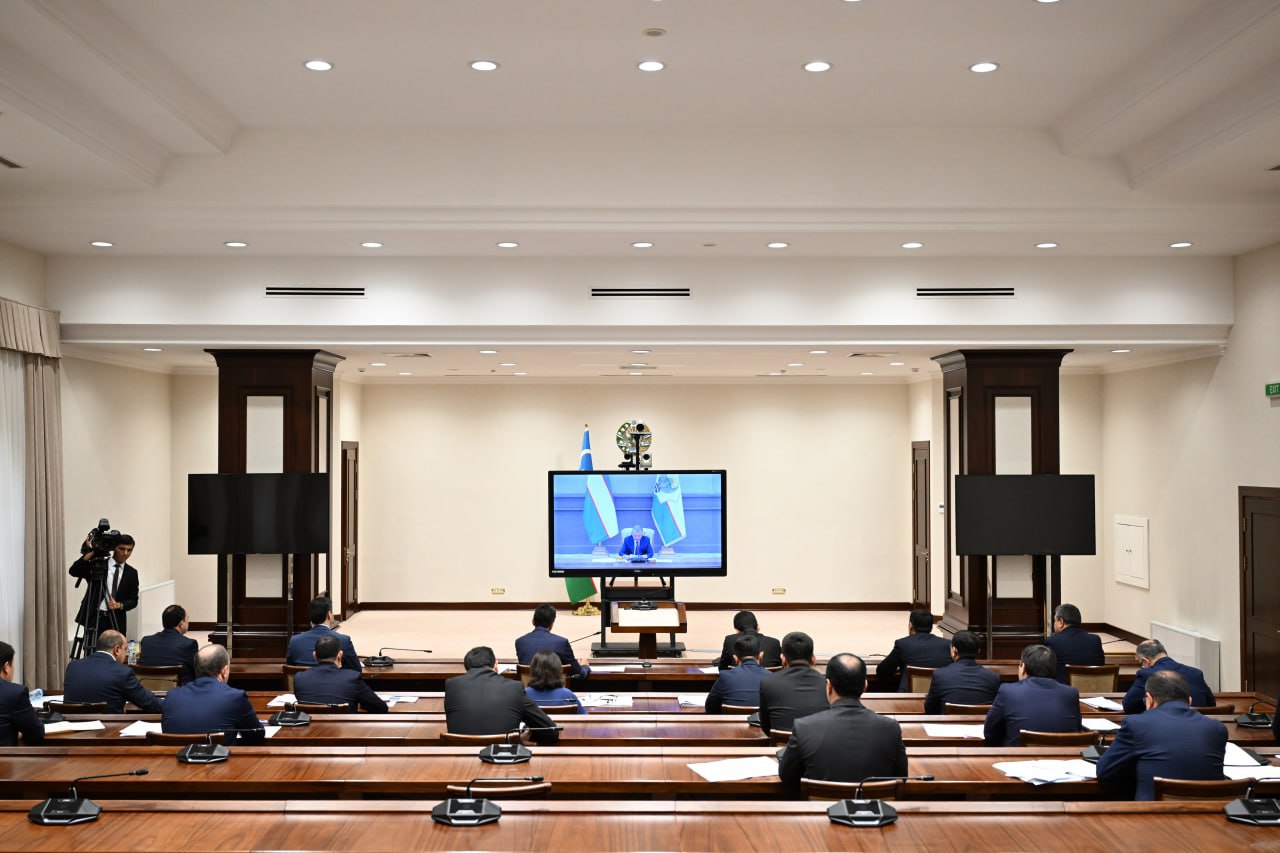
30.07.2025
On July 30 under the chairmanship of President Shavkat Mirziyoyev a meeting was held on the issues of fruits, vegetables and food products exports.
Our country possesses a great potential in the sphere of agriculture. In the past three years 250 thousand hectares of land earlier engaged in cultivation of cotton and grain crops, have been transformed into cultivating food crops. 160 thousand hectares of new gardens and vineyards have been created, the old plantations on an area of 107 thousand hectares have been renewed. 1500 food projects worth $1 billion have been launched.
Agricultural reforms have gained international recognition. This month, Uzbekistan was elected a member of the Council of the Food and Agriculture Organization of the United Nations (FAO). This opens up broad opportunities for promoting national and regional initiatives and attracting additional investment.
Our products are highly valued abroad for their naturalness and excellent taste, forming the “Made in Uzbekistan” brand. The country is a world leader in the export of dried plums, apricots, peaches, raisins, cherries, and legumes.
In the first six months of this year, food exports grew by 44 percent, amounting to $1.326 billion. The geography of exports has expanded to include 16 new countries.
At the same time, the situation in the world is becoming increasingly unstable, with climate anomalies becoming the norm. In such conditions, every export market is of great importance.
However, not everywhere are the available opportunities being fully utilized. For example, the growth rates of food exports from Surkhandarya, Tashkent, and Karakalpakstan regions lag behind other regions. And Navoi region was unable to reach last year's volumes. In 21 districts, exports did not even reach 70 percent of last year's level.
In addition, this year, 80 percent of fruit and vegetable exports are destined for just five countries. Exports to countries with high demand, such as the United Kingdom, Italy, Sweden, Japan, India, and Qatar, remain low. The insufficient activity of our diplomatic institutions and trade representatives abroad was pointed out.
The meeting analyzed these shortcomings and identified measures to improve agricultural efficiency and increase exports. This was noted as a key area for the country's economic security. The need to grow crops that are resistant to climate change and drought was emphasized.
Based on the analysis, additional reserves and opportunities for exports were identified by region.
Due to outdated working methods, 75 percent of last year's fruit and vegetable exports occurred between May and October, when the global market is saturated. To ensure year-round supplies and sales at higher prices, it is necessary to develop product processing.
For example, forward-thinking entrepreneurs have begun to use shock freezing technology for cherries to sell them in winter. They also imported and re-exported products when there was a shortage of domestic production. In this regard, the need to increase the production of export products, especially cherries, was noted.
This year, 16 modern packaging enterprises were launched, but this is not enough. Only 18 percent of exported products have modern packaging. The goal was set to launch 15 more of such enterprises by the end of the year.
One of the largest export resources is legumes. Every year, exports of beans, mung beans, chickpeas, and millet amount to $450 million. However, due to a shortage of labor, up to 30 percent of the harvest is lost, reducing export potential.
In developed countries, farmers harvest legumes using special combines. Therefore, it has been decided to allocate subsidies for the purchase of such equipment up to 15 percent of its cost and to compensate for part of the interest rate on loans exceeding 10 percent.
To reduce transportation costs, processed products can now be exported from any customs point.
Today, 350 million high-yield seedlings that are in demand on foreign markets are needed to create new orchards and renovate old ones. Agrostars companies have been established in 16 districts and tasked with starting work on growing seeds and seedlings and producing fertilizers.
Instructions have been given to build in vitro laboratories and modern agricultural complexes with equipment for storage, packaging, sorting, and processing of products for Agrostars companies.
Today, the country has 5,100 hectares of greenhouses, and the volume of products grown has increased from 110,000 to 546,000 tons over the past seven years.
However, due to heavy credit burdens, high fertilizer prices, and unstable gas supplies, more than 600 hectares of greenhouses have ceased operations, and 128 hectares have been transferred to banks due to debt.
To support greenhouses, it has been decided to provide guaranteed gas supplies during the winter period to those farms that undertake to export their products. Greenhouses that have switched to coal or alternative fuels and have export obligations will also be given the opportunity to return to gas heating.
To ensure working capital, prepayment for gas from October to March will be 50 percent. Contracts with gas companies must be concluded before October 1.
The repayment terms for greenhouses that have switched to coal or alternative fuels will be extended. When creating greenhouses with heat pumps, up to 20 percent of the costs or 4 percent of the loan rate will be compensated.
Starting this year, all greenhouses, regardless of category, will pay land tax at the rate for agricultural land. By 2028, the social tax rate for greenhouse workers will be reduced from 12 to 1 percent.
The Tax Committee has been tasked with analyzing the effectiveness of using gas redirected from greenhouses to other industries. If low added value is created there, the gas will be returned to the greenhouses. A separate task has been set to finally resolve the problems associated with the negative impact of greenhouses on the environmental situation in Tashkent region.
Water-saving technologies are currently used on 224,000 hectares, which has saved 420 million cubic meters of water and made it possible to use an additional 65,000 hectares of land. This year, 1.2 trillion soums have been allocated for this purpose.
By the end of the year, it is planned to additionally introduce drip and sprinkler irrigation on 10,000 hectares and carry out laser levelling of 200,000 hectares of land.
The Ministry of Economy and Finance has been tasked with providing funding for this work and forming a budget of 2 trillion soums for next year.
As is well known, laws on planting crops along fields and on cooperation in agriculture were recently adopted. The adoption of the new Water Code is also an important step towards ensuring food security in conditions of water scarcity. It was emphasized that it is advisable to continue working on legislative measures to increase the income of the agricultural sector, stimulate exports, and introduce advanced standards.
The government was instructed to establish a permanent dialogue with exporters, greenhouse owners, and fruit and vegetable producers, and to identify and resolve in a timely manner all issues and problems arising in interaction with state bodies.
At the meeting, reports from responsible officials were also heard and successful examples of entrepreneurs who have achieved high results in the export and production of agricultural products were considered.
